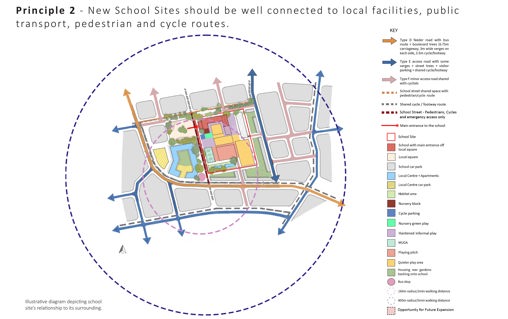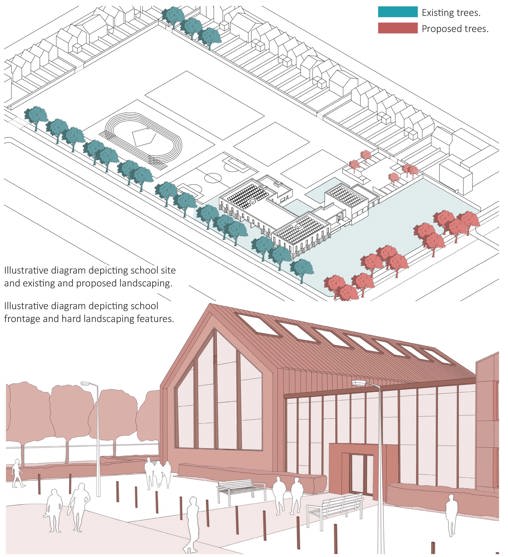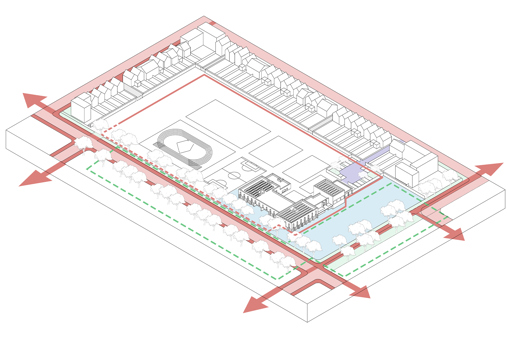Essex Schools Design Guidance
Project details
- Client: Essex County Council Spatial Planning
- 15 May 2025
- Essex
People involved
Specialisms
Place Services' Urban Design team has prepared guidance on new Primary, Secondary and Sixth Form schools, which can equally apply to new Early Years and Special Needs schools. The guidance is structured as a series of 12 Principles which can be flexibly applied by Planning Officers, Agents and Designers in all work associated with the planning of new schools. Covering advice relating to schools at each of three stages- creation of Local Plans, Masterplans and School Designs- it seeks to be well grounded in planning policy, including the National Design Guide and other sections of the Essex Design Guide, as well as the Department for Education specifications. It was prepared following consultation with School Place Planning, School Architects, Planning Officers, Sustainable Transport, the Climate and Planning Unit, and Councillors at Essex County Council.
Well-designed schools create environments that facilitate children’s learning, wellbeing, and community engagement. Exemplary school designs are contextual, legible, sustainable, and well-integrated into the community, with connections to pedestrian, cycle, and public transport networks, encouraging active travel and reducing car dependence. This integration supports the creation of vibrant, inclusive public spaces designed to enhance social interaction and community cohesion.
The document also gives advice as to when to consult the Essex Quality Review Panel to encourage high-quality design, sustainability, environmental infrastructure and community coherence within Essex, and to ensure high-quality, contextual, legible, well-connected sustainable school design. Reviews are best undertaken at an early stage of the design process. This ensures any design is flexible in responding to comments and observations through the panel process. A programme with consultation of this expert multi-disciplinary Panel at its core is therefore detailed within the document. It includes a series of illustrative diagrams which explain the principles.
View the Essex Schools Design Guidance.
The project also included input into the Essex County Council Developers’ Guide to Infrastructure Contributions, which details the scope and range of contributions towards infrastructure which Essex County Council may seek from developers and landowners in order to mitigate the impact and make development acceptable in planning terms, including development requirements for schools.



